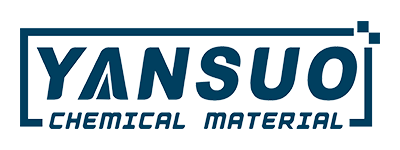Analysis of Light Sources in the Selection of Photoinitiators: A Study on Absorption Performance Based on Molar Extinction Coefficient
In the previous article, we discussed in detail the action principle, classification system, and selection basis of photoinitiators. Based on the previous research foundation, this paper will focus on the most critical consideration factor in the selection process of photoinitiators —— the analysis of light sources.
The absorption of light by photoinitiator molecules can be reflected by the molar extinction coefficient at this wavelength.
The molar extinction coefficient (or molar absorption coefficient) quantifies the intensity of light absorption by a substance at a specific wavelength and is a key factor in understanding light-induced reactions (such as polymerization). The molar extinction coefficient (ε) is an indicator for measuring the intensity of light absorption by a substance at a specific wavelength. It is an inherent property of the substance and is related to the wavelength.
The molar extinction coefficient is a key parameter in the Beer-Lambert law, which relates the absorbance (A) to the concentration (c), the optical path (b), and the molar extinction coefficient (ε): A = εbc.
A higher molar extinction coefficient means that the photoinitiator can absorb more photons, thus achieving faster polymerization kinetics and potentially obtaining better overall conversion rates.
The following table lists the molar extinction coefficients of some photoinitiators.
(1)The molar extinction coefficients of some photoinitiators at the emission wavelengths of high-pressure mercury lamps
单位:L/(mol.cm)
|
光引发剂 |
254nm |
302nm |
313nm |
365nm |
405nm |
435nm |
|
184 |
3.317*104 |
5.801*102 |
4.349*102 |
8.864*101 |
|
|
|
369 |
7.470*103 |
3.587*104 |
4.854*104 |
7.858*103 |
2.800*102 |
|
|
50%184+50%BP |
6.230*104 |
1.155*103 |
5.657*102 |
1.756*102 |
|
|
|
651 |
4.708*104 |
1.671*103 |
7.223*102 |
3.613*102 |
|
|
|
784 |
7.488*105 |
1.940*104 |
1.424*104 |
2.612*103 |
1.197*105 |
1.124*103 |
|
819 |
1.953*104 |
1.823*104 |
1.509*104 |
2.309*103 |
8.990*102 |
3.000*101 |
|
907 |
3.936*103 |
6.063*104 |
5.641*104 |
4.665*102 |
|
|
|
30%369+70%651 |
3.850*104 |
1.240*104 |
1.560*104 |
2.750*103 |
9.300*101 |
9.000*101 |
|
25%BAPO+75%1173 |
3.207*104 |
5.750*103 |
4.162*103 |
8.316*102 |
2.464*102 |
|
|
25%BAPO+75%184 |
2.660*104 |
6.163*103 |
4.431*103 |
9.290*102 |
2.850*102 |
|
|
50%BAPO+50%184 |
2.235*104 |
1.280*104 |
8.985*103 |
1.785*103 |
5.740*102 |
|
|
2959 |
3.033*104 |
1.087*104 |
2.568*103 |
4.893*101 |
|
|
|
1173 |
4.064*104 |
8.219*102 |
5.639*102 |
7.388*101 |
|
|
|
50%TPO+50%1173 |
2.773*104 |
4.903*103 |
3.826*103 |
7.724*102 |
2.176*102 |
|
(2)The molar extinction coefficients of some photoinitiators
单位:L/(mol.cm)
|
光引发剂 |
260nm |
360nm |
405nm |
|
IPBE |
11379 |
50 |
|
|
BP |
14922 |
51 |
|
|
MK |
8040 |
37500 |
1340 |
|
CTX |
42000 |
3350 |
17800 |
|
DETX |
42000 |
3300 |
1800 |
|
DEAP |
5775 |
19 |
|
Preview for the Next Issue: Research on the Compatibility with Monomers in the Selection of Photoinitiators
In the light-curing system, the compatibility between the photoinitiator and the monomer is one of the key factors affecting the curing effect. The next article will delve into the dissolution behavior of photoinitiators in different monomers. Through a systematic study of the compatibility rules between photoinitiators and monomers, it provides a scientific basis for the design and optimization of light-curing formulations, helping to improve the comprehensive performance of light-curing materials.
If you are interested in photoinitiators, please follow us for more detailed information!





